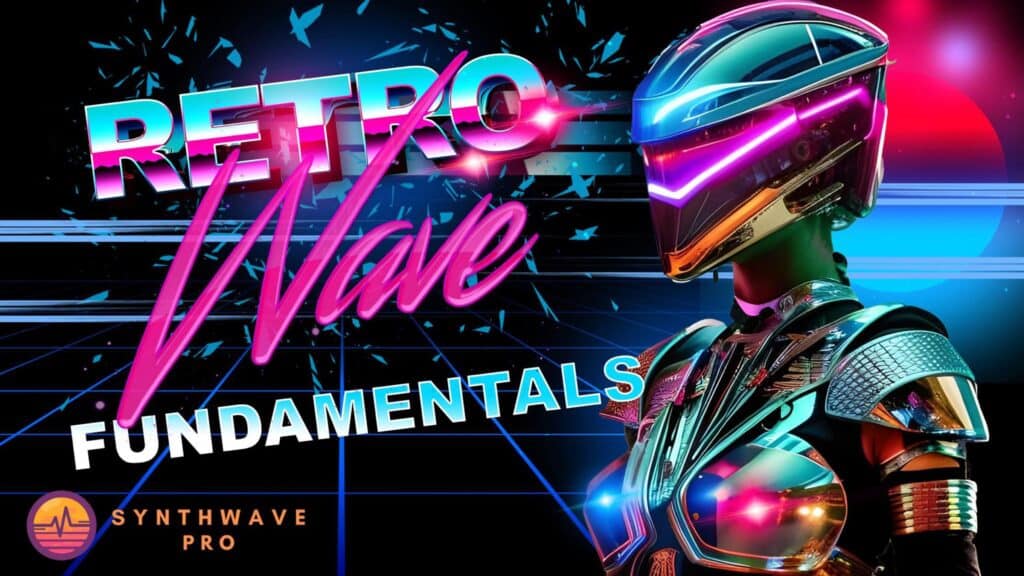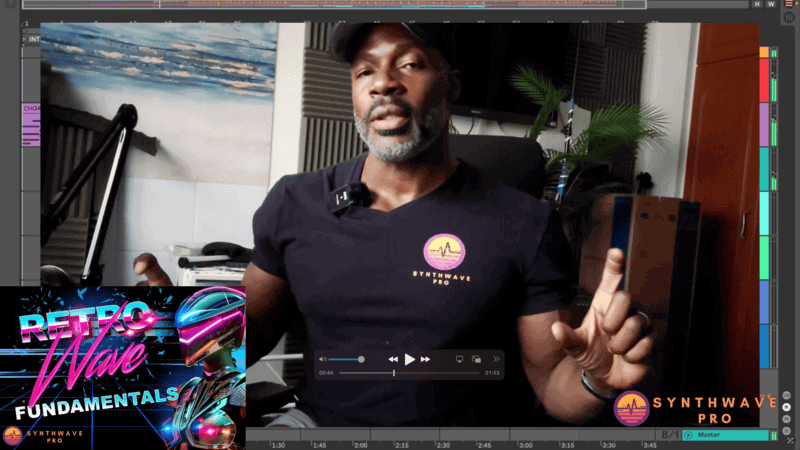If you’re making synthwave, you’ve probably fallen in love with the sound of the 1980s:
Warm synths, punchy drums, saturated tape textures, and a glowing analog aesthetic that feels nostalgic and cinematic.
But here’s the thing…
Most of us don’t have a fundamental understanding of synthwave music production.
This guide will show you exactly how to mix put together a compelling synthwave/retrowave song using basic plugins for that warm analog feel all done inside the box.
Setting the tempo
A song’s tempo determines what direction your song will take. Not only does tempo dictate the feel and overall vibe of the song, it also determines which sounds will be used for convey emotion. Oftentimes, mid-tempo songs allow you to take advantage of soundscapes such as pads and reverberant lead sounds so be sure to set the right tempo for the right feel.
Adding the right drum samples
Once you’ve set the tempo to your synthwave track, it’s time to go hunting for the right drum sample. Initially, you can build the track with basic drum sample sounds from popular drum machines such as the TR-707. Just remember that these drums sounds are there as a placeholder and can be swapped or layered at a later time. For now, we’re aiming to get a proper feel for our track.
Remember that thing I had said about tempo? Seeing that we’re choosing a more laid-back tempo, why not go crazy with a long-tail reverb? Mid-tempo sounds allow for longer decaying reverbs. Experiment to see what sound best.
Lay down some chords
You don’t have to a music theory nerd to figure out how to make a chord progression. In fact, in the SynthwavePro Retrowave fundamentals course, I break down key concepts with chord development. We deep dive into strategies for chord progressions that make sense and how to create them easily with a basic understanding of music theory. This is perhaps the most fun chapter as I take you on a music theory lesson on how to create compelling synthwave chords. Learn more here
Create a memorable melody
Melodies are what define a track. In fact, most people often refer to a soundtrack’s melody as a means of identifying a song. In this synthwave course, we come up with a powerful technique for creating a catchy melody for out song. We will use the underlying chord structure to input a melody that is easy to sing. I’ll even show you a clever technique that you can begin to apply to your own productions so you never struggle to create a melody every again.

Create dramatic and subtle transitions
Transitions create tension and release. In this section of our music production journey, we’ll use sounds to bridge together various section of our songs. Pretty soon, we’ll need to focus a little more on arrangement but for now, I’ll provide some strategies for creating transitions that add momentum to our song.
Use automation to add dynamics and interest
We now dive into automation and use it to create dynamics. I’ll show you how to apply automation to some of our sounds to get the most out of your song sections. Automation is often overlooked, but in this synthwave course, we’ll deep dive into the concept a little more. In the end, these automation techniques will serve you will when you produce your own soundtracks.
Arrangement
What do you do after you’ve created your 8 bar loops? Many aspiring producers struggle to complete a song because they lack the necessary tools for creating a compelling arrangement. In these video chapters, I’ll show you how to maintain interest throughout your entire synthwave song. It’s not as hard as you think. I will reveal powerful arranging techniques that you can apply almost instantly to your productions.
Mixing and mastering
Finally, we will mix and master that track. Mixing will involve setting the right levels and applying some saturation to our track. We will also focus on methods for creating space within our track using the right reverbs for various tasks. Mastering will render our polished track so that it sound sparkling and loud while simultaneously embodying that retro feel.
Why you should take the retrowave course?
The retrowave fundamentals course is a step by step start to finish course that covers some of the most challenging aspects of synthwave music production.
If you struggle with any of these topics, then this might be the course for you:
- Drum sample selection
- Drum programming
- Chord progressions
- Melody creation
- Transitions
- Automation
- Arrangement
- Mixing
- Mastering
In the end, the retrowave course has helped many aspiring synthwave producers get a solid understanding of the basics of synthwave music production. To learn more about the course, or if you’re ready to dive right in, visit this link.
Hope to see you soon!
Recent Posts
What’s the Most Frustrating Part of Making Music And How to Overcome It
Music creation can be one of the most rewarding forms of self-expression. But let’s be honest—it can also be maddening. That moment when inspiration strikes… only to be blocked by technical...
Finding time to produce music while managing a job can be challenging, but several strategies can help you balance both effectively. Prioritize Music Production Make music a priority in your...

